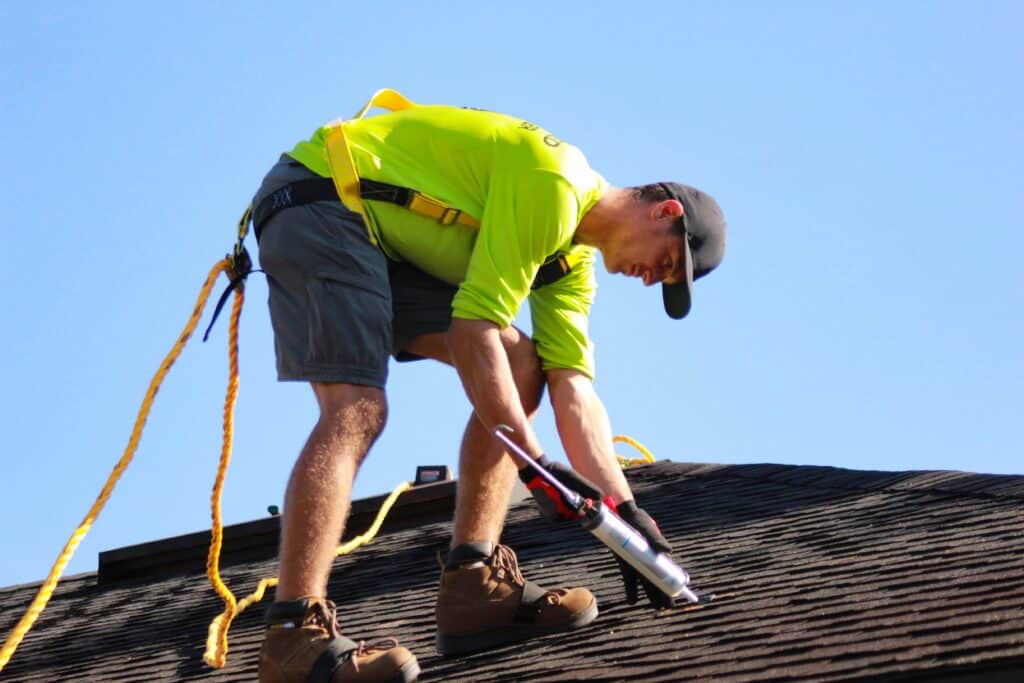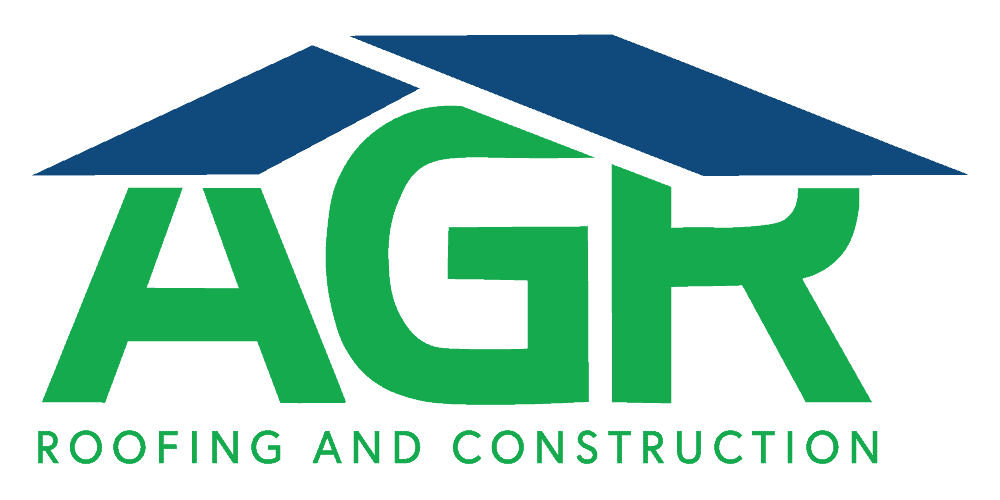When your roof demands urgent replacement, the financial burden can seem overwhelming. Fortunately, you can breathe a sigh of relief knowing your homeowners insurance may cover the cost, especially in cases of unexpected damage from accidents or natural events.
However, the reality of navigating insurance claims can be complex and daunting. Most people are unaware of the specific conditions under which their policy provides coverage, leading to confusion and potential financial strain.
Understanding how to navigate this process effectively can save you money and a great deal of stress. This guide demystifies the process of financing a roof replacement through insurance, outlining key considerations and steps to ensure you make the most of your policy coverage.

Finding the Damage
Identifying the damage to your roof is a critical first step in filing an insurance claim for a roof replacement. This step is not just about acknowledging that there is damage but also about understanding the extent and cause of it, which are crucial details for your insurance claim.
Start by conducting a detailed inspection of your roof. Look for obvious signs of damage like missing shingles, leaks, dents on metal roofing, cracks, and any other visible imperfections.
Don’t overlook the less apparent signs, such as loose granules from shingles collecting in gutters or downspouts, as these can indicate more significant issues. Having a professional roofing contractor conduct an assessment can provide a more accurate and detailed damage report.
Determining the cause of the damage is essential since insurance companies typically cover damage caused by unforeseen events like storms or accidents. If the damage is due to wear and tear or a lack of maintenance, it’s less likely to be covered. Record any recent weather events or other incidents that could have caused the damage.
Documenting the Damage
As you inspect your roof, document every bit of damage. This process is about creating a comprehensive and clear record of the damage, which serves as a crucial piece of evidence in your claim. Consider the following to ensure you document the damage properly:
Capture Detailed Photographs
Begin by taking extensive photographs of all the damage. These should include close-up shots of specific damaged areas and wider shots that show the context and extent of the damage on the roof.
Video Documentation
In addition to photographs, consider taking a video. A video can provide a continuous view of the damage and offer a more dynamic perspective that photos might miss. Narrate the video with explanations of what is being shown, which can be very helpful in providing context to the insurer.
Detailed Written Description
Accompany your visual documentation with a detailed written description of the damage. Note the size, type, and location of each damaged area. Include dates and times, especially if the damage occurred during a known weather event or accident.
Professional Roof Inspection Report
A professional roofing contractor inspecting the damage and providing a formal report can bolster your claim. This report can provide an expert’s perspective on the cause and extent of the damage, which can be influential in the claims process.
Record of Maintenance and Repairs
If you have conducted regular roof maintenance or any repairs on your roof, include records of this work in your documentation. This demonstrates a history of proper care, countering any potential claims that the damage was due to neglect.
Filing a Claim With the Insurance Company
Filing a claim with your insurance company is a pivotal step in securing coverage for your roof replacement. Here’s how to navigate the process effectively:
Review Your Insurance Policy
Before filing a claim, thoroughly review your homeowners insurance policy. Understand what types of roof damage are covered and any specific procedures or deadlines for filing a claim. Knowing your policy inside out will help you present your case more effectively and anticipate any potential challenges.
Contact Your Insurance Agent
Reach out to your insurance agent or the company’s claims department as soon as possible after the damage occurs. Explain the situation and ask for specific instructions on how to proceed with the claim.
Submit the Required Documentation
Provide all the documentation you’ve gathered, including photographs, videos, a detailed written description of the damage, and any professional inspection reports. The more comprehensive and detailed your evidence is, the stronger your claim will be.
Complete the Claim Forms
Fill out the claim forms provided by your insurance company. Be thorough and accurate in your responses. Any discrepancies between your claim forms and the documentation could raise questions and potentially delay the process.
Schedule an Insurance Adjuster’s Visit
The insurance company will likely send an adjuster to inspect the damage. Prepare for this visit by having all your documentation and any repair estimates ready.
Follow Up Regularly
Once your claim is filed, maintain regular communication with your insurance company. Keep track of the claim’s progress and be available to answer any further questions or provide additional information.
Understand the Settlement Offer
When your insurance company makes a settlement offer, review it carefully. Ensure it covers the necessary costs for a proper roof replacement. If the offer seems insufficient, don’t hesitate to negotiate or ask for clarification on how the amount was determined.
What to Do if the Insurance Company Denies the Claim
If your insurance company denies your claim for a roof replacement, it can be a disheartening experience. However, this is not necessarily the end of the road. There are several steps you can take to contest the decision and potentially reverse it, including the following:
Understand the Reason for Denial
The first step is to understand why your claim was denied. Insurance companies are required to provide a written explanation for the denial. This explanation should detail the specific reasons why your claim was not accepted, which could range from the type of damage not being covered to insufficient evidence of the damage.
Review Your Policy
Once you know the reason for the denial, review your insurance policy thoroughly. Understand the terms and conditions, and specifically look for clauses or coverage that could counter the reason for denial. Sometimes, a denial is based on a misunderstanding or misinterpretation of the policy terms.
Gather Additional Evidence
If the denial is due to insufficient evidence of damage or the cause of damage, consider gathering more comprehensive documentation. This could involve getting a second opinion from another roofing professional or an independent adjuster who can provide a detailed assessment.
File an Appeal
File a formal appeal in accordance with your insurer’s guidelines. In your appeal, include all relevant documentation, professional assessments, and additional evidence supporting your case. Clearly articulate why you believe the denial was incorrect and why your claim should be reconsidered.
Seek Professional Advice
A lawyer specializing in insurance claims can offer valuable guidance and help you appeal on grounds such as deceptive language in the insurance policy. A public insurance adjuster can also represent you in dealings with your insurance company, providing expertise and negotiation skills.
Contact State Insurance Department
If your claim denial remains unresolved even after appealing to the insurance company, you can contact your state’s insurance department. These departments oversee insurance companies under state-specific laws and are equipped to clarify your rights and the insurer’s obligations. Many states offer a mediation service, facilitating a dialogue between you and your insurer to find a mutually agreeable resolution.
Consider Alternative Funding
If your appeal is unsuccessful or if you decide not to appeal, explore alternative methods to fund your roof replacement. This might include financing options through roofing companies, personal loans, or home equity loans.

What Happens If the Insurance Company Accepts the Claim?
Claim acceptance marks the beginning of a resolution process that brings financial relief and a path forward for repairs. Here’s what typically happens next:
Approval Notification
You will receive a formal notification from your insurance company confirming the acceptance of your claim. This communication should outline the coverage details, including the extent of repairs or replacement that will be funded and any deductibles you are responsible for.
Payment Process
Some insurers issue a single payment covering the total cost of the repair minus your deductible. Others may opt for a two-step payment process, issuing an initial sum to start the repairs and a final payment upon completion. Be sure to understand their payment schedule and how it aligns with your contractor’s billing process.
Selecting a Contractor
With funding assured, your next step is to select a qualified roofing contractor. Choose a licensed, insured, and experienced professional to ensure quality work. While some insurance companies may provide a list of preferred vendors, you can choose your contractor.
Overseeing the Replacement Process
Once a contractor is selected, they will work with you to schedule and complete the replacement. Keep in close contact with the contractor and your insurance company throughout this process to ensure all work is completed satisfactorily and within the agreed-upon scope.
Final Inspection and Completion
After the repairs are completed, your insurance company or local building authorities might require a final inspection to ensure the work meets all standards. Upon satisfactory completion, the contractor will provide a detailed invoice, which you’ll submit to your insurance company for the final payment, if applicable.
Financing a Roof Replacement Through Insurance Made Easy
While financing a roof replacement through insurance might sound intricate, it is a navigable process. You only need a clear understanding of the process, from documenting the damage and understanding your policy to effectively communicating with your insurance company.
Partnering with a reputable roofing company, like AGR, offers invaluable assistance throughout this process. Besides guaranteeing high-quality roof installation, we guide clients through the intricacies of insurance claims, ensuring you receive the best possible deal. Contact us today to simplify your roof replacement journey and optimize your investment.





